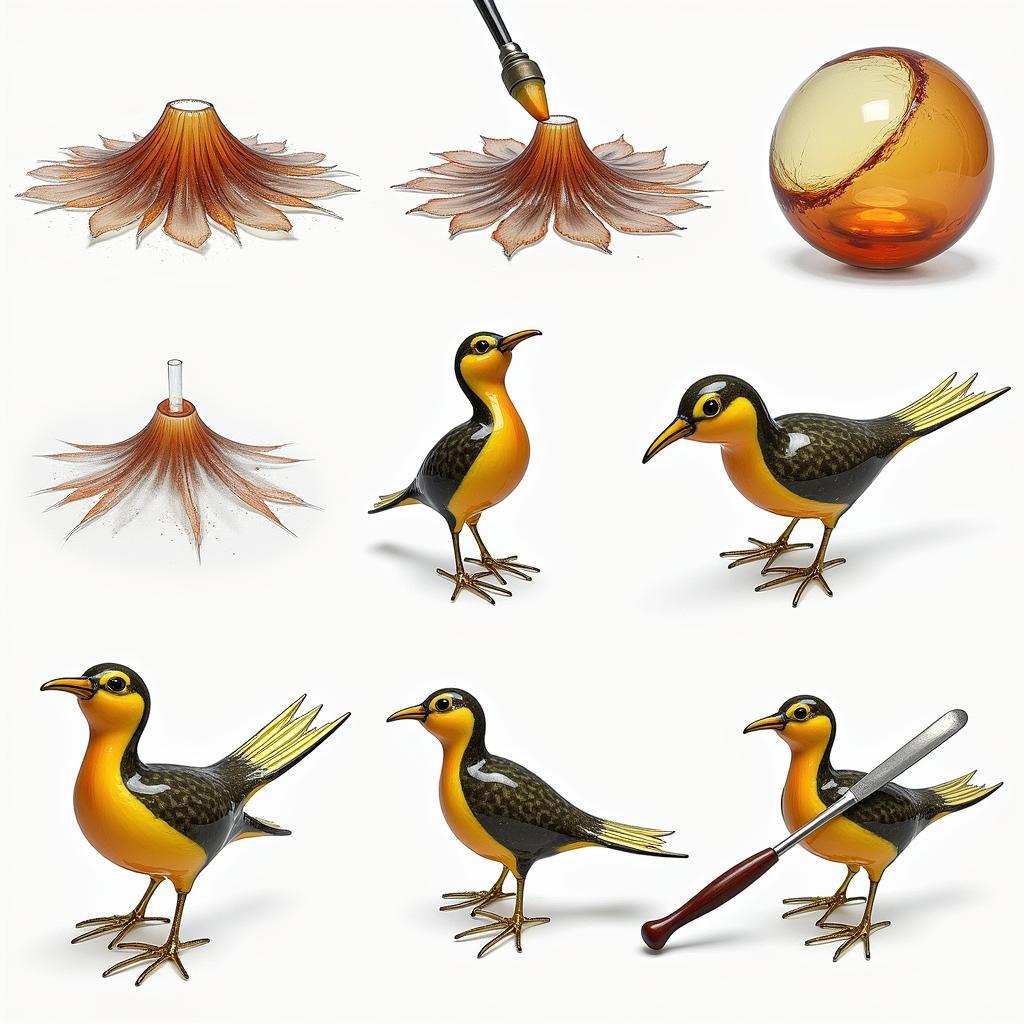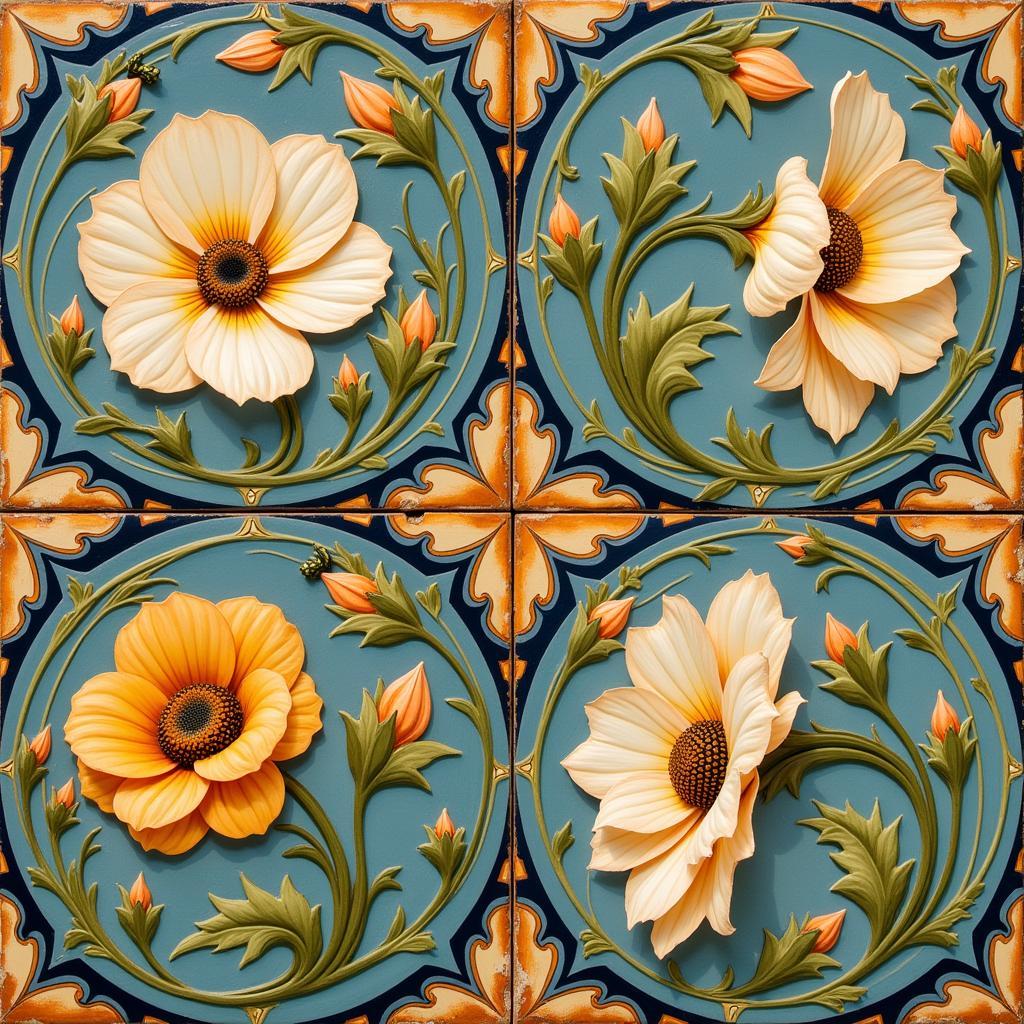Murano Art Glass Birds: A Flight of Fancy in Glass
Murano Art Glass Birds are exquisite, handcrafted sculptures that capture the delicate beauty and vibrant energy of birds in flight. These stunning pieces, born from the centuries-old tradition of Murano glassmaking, are more than just decorative objects; they are miniature works of art, each one a testament to the skill and artistry of the Murano glass masters. From the fiery furnaces of Murano, Italy, these avian wonders emerge, transforming molten glass into breathtaking forms.
The Art of Capturing Flight: Crafting Murano Glass Birds
Murano glass birds are created using a variety of intricate techniques, passed down through generations of artisans. The process begins with the careful selection of colored glass canes, meticulously crafted to achieve the desired hues and patterns. These canes are then heated in a furnace, reaching temperatures of over 1,000 degrees Celsius. The molten glass is manipulated with incredible precision, using tools like tweezers, blowpipes, and shears.
The artist’s skillful hands shape the molten glass into wings, beaks, and feathers, capturing the unique characteristics of each bird species. Sometimes, gold leaf or aventurine is added to create shimmering accents, further enhancing the bird’s splendor. The cooling process is just as crucial, requiring slow and controlled cooling to prevent cracking and ensure the glass retains its vibrant colors.
 Murano Glass Bird Creation Process
Murano Glass Bird Creation Process
A History of Avian Artistry: The Origins of Murano Glass Birds
The tradition of Murano glassmaking dates back to the 13th century, when the Venetian Republic decreed that all glass furnaces be relocated to the island of Murano to protect the city from fire hazards and safeguard the secrets of glassmaking. Over the centuries, Murano glassmakers developed unique techniques, becoming renowned for their artistry and craftsmanship. The creation of glass birds likely emerged from this rich tradition, inspired by the island’s natural surroundings and the vibrant birdlife of the Venetian lagoon.
These delicate creations quickly became highly sought-after by collectors and connoisseurs, symbolizing not only artistic skill but also wealth and status. Today, Murano glass birds continue to be cherished for their exquisite beauty and the enduring legacy of Murano glassmaking.
Choosing Your Feathered Friend: A Guide to Collecting Murano Art Glass Birds
Are you looking to start your own collection of these beautiful avian sculptures? Consider the following factors when selecting a Murano glass bird:
- Species: From majestic eagles to delicate hummingbirds, a wide array of bird species are represented in Murano glass. Choose a bird that resonates with you, perhaps one that symbolizes a particular quality or holds personal significance.
- Color: Murano glass is famed for its vibrant colors, ranging from deep blues and greens to fiery reds and oranges. Consider the color scheme of your existing decor or choose a bird with colors that evoke a particular mood or emotion.
- Size and Style: Murano glass birds come in various sizes and styles, from small, simple figurines to large, elaborate sculptures. Choose a size and style that complements your space and personal aesthetic.
- Artist: While many Murano glass birds are unsigned, some bear the signature of the artist. Collecting works by specific artists can add value and depth to your collection.
woven glass art offers diverse styles of glasswork that can complement your Murano bird collection.
Identifying Authentic Murano Glass Birds
It’s essential to ensure you are purchasing genuine Murano glass. Look for the “Vetro Artistico® Murano” trademark, a guarantee of authenticity. Examine the bird closely for imperfections, as handcrafted pieces often have slight variations. Research reputable dealers and galleries specializing in Murano glass to ensure the provenance and quality of your purchase.
Murano Art Glass Birds: FAQs
Q: What are Murano glass birds made of?
A: They are made of silica sand, soda ash, and other minerals, heated to high temperatures and meticulously shaped by skilled artisans.
Q: How do I clean my Murano glass bird?
A: Use a soft, dry cloth to dust your bird. Avoid using harsh chemicals or abrasive cleaners.
Q: Are Murano glass birds fragile?
A: Yes, they are delicate and should be handled with care. Avoid dropping or bumping them against hard surfaces.
Q: Where can I buy authentic Murano glass birds?
A: Reputable galleries and dealers specializing in Murano glass are the best places to purchase authentic pieces.
Q: How much do Murano glass birds cost?
A: The price varies depending on the size, complexity, and artist. Small figurines can cost a few hundred dollars, while larger, more elaborate sculptures can fetch thousands.
In conclusion, Murano art glass birds are more than just decorative objects. They are captivating works of art, embodying centuries of tradition and the unparalleled skill of Murano glass masters. Each bird is a unique expression of artistic vision, capturing the delicate beauty and vibrant energy of these feathered creatures. Whether you are a seasoned collector or simply appreciate the beauty of handcrafted glass, a Murano art glass bird is a treasured piece that will bring a touch of Venetian elegance to any space.
Need assistance? Contact us at Phone Number: 02462573573, Email: danteum@gmail.com or visit us at Savico Megamall, 7-9 Đ. Nguyễn Văn Linh, Gia Thụy, Long Biên, Hà Nội 10000, Việt Nam. We have a 24/7 customer service team.


